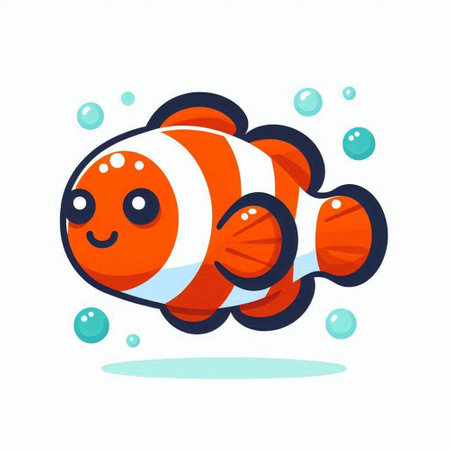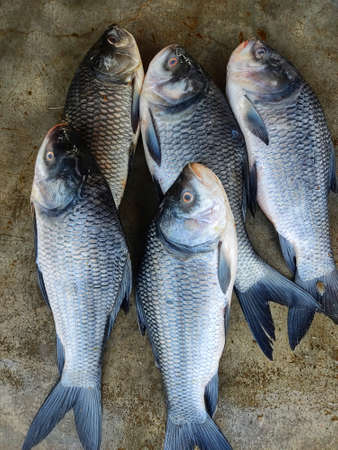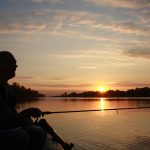Why Fishing is Great for Kids
Introducing your kids to fishing is more than just a fun day at the lake or river—it’s an amazing way to nurture lifelong skills and create lasting memories. In the heart of American outdoor culture, fishing offers families a chance to unplug from screens and connect with nature together. Whether you’re heading to a local pond or planning a weekend camping trip, fishing is the perfect activity for all ages. It teaches kids patience as they wait quietly for a bite, responsibility as they learn to handle equipment and care for their catch, and respect for wildlife and the environment. Plus, working together as a family strengthens bonds and builds teamwork in ways few other activities can. With so many beginner-friendly fish species out there, it’s easy to spark your child’s curiosity and sense of adventure while helping them gain confidence in new skills—all against the backdrop of America’s beautiful outdoors.
Essential Gear and Safety Tips for Young Anglers
Fishing with kids is about more than just catching fish—its about building memories and teaching life skills in a safe, fun environment. Before heading out on your first fishing adventure, make sure you have the right gear and understand the basic safety rules that will keep everyone happy and protected. Here’s a handy guide to get started:
Kid-Friendly Fishing Gear
| Item | Why Its Important | Recommended Features |
|---|---|---|
| Rod & Reel Combo | Easy handling for small hands | Lightweight, 4-5 feet, spincast reel |
| Life Jacket | Water safety essential for all ages | U.S. Coast Guard-approved, proper fit |
| Tackle Box | Keeps hooks and bait organized and safe | Simple latch, rounded corners, plastic design |
| Bait | Catches beginner-friendly fish species | Live worms or corn kernels (easy to use) |
| Sunscreen & Hat | Protects from harmful sun exposure | SPF 30+, wide-brimmed hat recommended |
| Pliers/Hook Remover | Makes unhooking fish safer and easier | Blunt tip, kid-sized grip if possible |
Safety Must-Knows for First-Time Anglers
- Always Supervise: Keep a close eye on young children at all times near water.
- Bait and Hooks: Teach kids to handle hooks carefully—demonstrate safe casting away from others.
- Sun and Hydration: Pack water bottles, reapply sunscreen often, and take breaks in the shade.
- Weather Check: Always check the forecast before your trip; avoid fishing during storms or extreme heat.
- First Aid Kit: Bring a small kit with band-aids, antiseptic wipes, and tweezers for minor scrapes or hook mishaps.
- Casting Zone: Mark a “safe zone” for casting so lines don’t tangle or accidentally hook someone nearby.
- Caring for Fish: Show how to gently release fish back into the water or safely store them if keeping.
Making Your First Family Fishing Trip Fun & Safe
The key to a successful first fishing trip is preparation. Pick a calm, easy-to-access spot like a local pond or lake with clear banks. Start with short outings—an hour or two is plenty for little ones. Celebrate every catch (even if it’s just seaweed!) and focus on the experience rather than the results. By choosing simple gear, practicing safety habits together, and sharing lots of encouragement, you’ll set your kids up for a lifetime of outdoor adventures and learning moments by the water.

3. Top Beginner-Friendly Fish Species for Kids
When introducing your kids to fishing, choosing the right fish species makes all the difference in creating a fun and memorable learning experience. Here are some of the best beginner-friendly fish that children will love catching on their first few trips to the water:
Bluegill
Bluegill are often considered the ultimate starter fish for young anglers. These small, colorful fish are found in ponds, lakes, and slow-moving rivers across the United States. Bluegill aren’t picky eaters—they’ll bite on worms, bread, or even little bits of hot dog! Because they’re plentiful and usually hang out close to shore, bluegill give kids lots of chances to practice casting and reeling in.
Sunfish
Sunfish, which include bluegill as well as pumpkinseed and longear sunfish, are another great choice for beginners. They have bright colors that spark curiosity and excitement in children. Sunfish are known for being easy to catch using simple bait and light tackle. Their gentle bites help kids build patience while waiting for a nibble, but their playful tugs make every catch feel like an adventure!
Perch
Perch are another kid-friendly option that can be found in many American lakes and rivers. They tend to gather in groups, so once you find one perch, there’s a good chance you’ll catch more! Perch don’t grow too big, making them manageable for little hands. Plus, their steady biting habits keep kids engaged and excited without long waits.
Why These Fish Make Great Teachers
These species are perfect for children because they’re abundant, active during the day, and not too challenging to catch with basic gear. With every successful catch, your child gains confidence, hones their skills, and builds a lifelong love for fishing—right alongside you.
4. Where to Find These Fish in the U.S.
One of the joys of fishing with kids is discovering new places together. Across the United States, there are countless family-friendly locations perfect for beginners eager to catch their first fish. Whether you live near a bustling city or out in the countryside, there’s likely a great spot nearby. Here are some popular types of locations and well-loved destinations where your family can cast a line:
Popular Local Fishing Spots
| Type of Location | Description | Examples |
|---|---|---|
| Public Ponds | Small, easy-to-access waters often stocked with beginner-friendly species like Bluegill and Catfish. | Central Park Pond (NYC), Echo Park Lake (Los Angeles) |
| Lakes | Larger bodies of water where families can find Bass, Crappie, and Sunfish. Many have piers and boat rentals. | Lake Lanier (Georgia), Lake Minnetonka (Minnesota) |
| Community Parks | Parks with fishing docks and kid-friendly amenities such as playgrounds and picnic areas. | Zilker Park (Austin, TX), Forest Park (St. Louis, MO) |
| State & National Parks | Protected areas with beautiful scenery and plenty of fish species; often require a day pass or fishing permit. | Yellowstone National Park (WY/MT/ID), Everglades National Park (FL) |
| Urban Fishing Programs | Cities sometimes stock local waters and host kids’ fishing events throughout the year. | Take Me Fishing™ events, Urban Fishing Program (Phoenix, AZ) |
Tips for Finding Family-Friendly Fishing Locations
- Check Local Regulations: Each state has different rules for fishing licenses and age limits—many allow kids under 16 to fish for free!
- Visit State Wildlife Websites: Most states list recommended family fishing spots online along with stocking schedules.
- Ask at Local Tackle Shops: Staff often know about hidden gems and upcoming community events perfect for young anglers.
- Look for Amenities: Restrooms, playgrounds, shaded picnic tables, and clear signage make the experience easier and more enjoyable for families.
No matter where you live in America, there’s an adventure waiting just around the corner. Exploring these places together not only helps your child learn how to fish but also builds lasting family memories by the water’s edge.
5. Simple Techniques to Help Kids Catch Their First Fish
When introducing kids to fishing, it’s important to keep things easy and fun so their first experience is a success. For the best beginner fish species like bluegill, sunfish, or perch, simple techniques work wonders—and you don’t need fancy gear! Choose a lightweight rod and reel combo that fits comfortably in your child’s hands. Spincast reels are especially popular for young anglers because they’re easy to use and rarely tangle.
For bait, live worms are always a favorite among both kids and fish. They’re wiggly, fun to handle, and attract most panfish. Small pieces of hot dog or bread can also be effective if you’re in a pinch—these options are safe for little hands and easy to put on a hook with minimal help from an adult.
Teach your child the “bobber and hook” method: simply attach a small bobber about a foot above the hook so it floats on the water’s surface. This helps kids see when they get a bite, as the bobber will wiggle or dip under the water. Show them how to gently cast out into calm, shallow areas where fish are likely to gather—near docks, weedy edges, or along sunny banks.
Remind your child to be patient, but also encourage frequent checks on their bait. Sometimes half the fun is reeling in and seeing what’s happening underwater! And when they do get that first tug, guide them to lift the rod smoothly rather than yanking hard—this helps prevent losing the fish and makes for a more rewarding catch-and-release experience.
Most importantly, celebrate every step together! Whether your child lands their first fish or simply enjoys trying, these simple techniques help build confidence and create lasting family memories by the water.
6. Making Fishing a Positive Learning Experience
Fishing can be much more than just catching fish—it’s a wonderful way for kids to develop patience, curiosity, and a respect for nature. As parents, your encouragement and guidance will shape how your child sees the outdoors and learns new skills. Here are some helpful tips to make every fishing trip with your beginner angler a memorable and positive learning experience:
Encourage Curiosity and Questions
When your child asks about different fish species, fishing gear, or how bait works, take the time to explore answers together. Bring along a simple field guide or use a mobile app to identify the fish you catch. Turn every question into an opportunity to learn something new about local wildlife and habitats.
Celebrate Every Catch—Big or Small
No matter if it’s a tiny bluegill or a wriggling sunfish, make each catch feel special. Celebrate their effort, not just the size of the fish! Take pictures, give high-fives, and let them share stories with friends and family. This builds confidence and keeps kids excited to go fishing again.
Teach Respect for Nature
Fishing is a great time to talk about conservation. Show your child how to handle fish gently and explain why some fish should be released back into the water. Remind them never to leave trash behind and respect all wildlife they encounter at the lake or river.
Follow Local Rules Together
Before heading out, review the local fishing regulations as a family—like size limits, daily catch limits, or restricted areas. Explain why these rules exist: to keep fish populations healthy for everyone to enjoy. Following the rules sets a good example and helps kids become responsible outdoor adventurers.
Create Lasting Memories
Most importantly, focus on having fun together. Pack favorite snacks, tell stories while waiting for bites, and enjoy being outdoors as a family. By turning each outing into an adventure filled with discovery and respect, you’ll inspire a lifelong love of fishing—and nature—in your kids.


